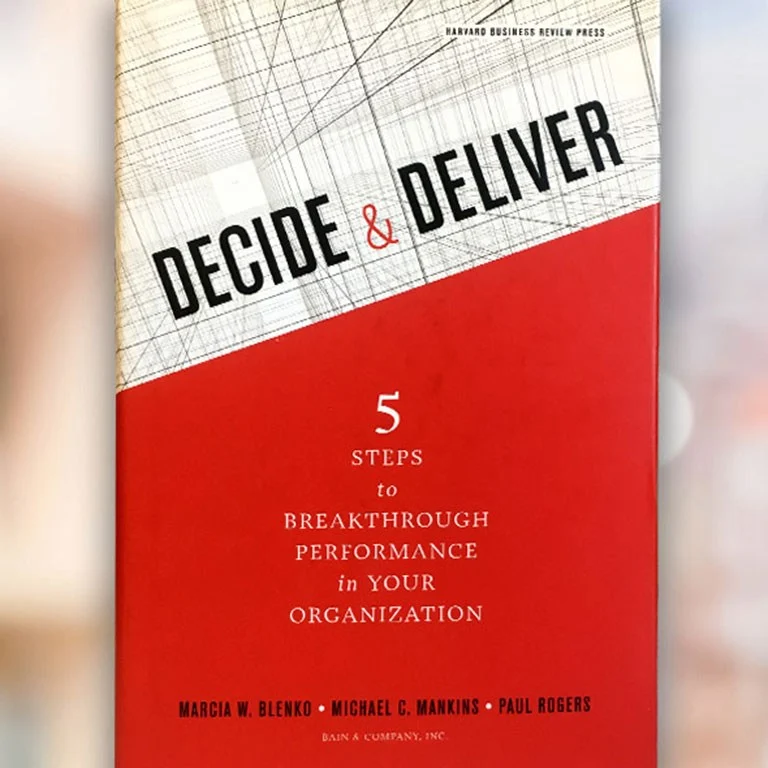Forbes.com
This article originally appeared on Forbes.com.
History has been full of bad decisions. The Trojans brought the famous wooden horse inside their city walls, not realizing it was full of Greek soldiers. Napoleon decided to invade Russia and returned with just a fraction of his army. The Titanic was outfitted with only enough lifeboats for a third of the total passengers and crew.
Getting business decisions right is tough, too. A company has to make good choices time after time. It has to do so speedily—faster than competitors—and it has to ensure that decisions get translated into action. No wonder there are as many missteps in this sphere as there are in dubious moments in history.
When a company makes a really bad decision, it’s likely that more than one organizational element isn’t working right. After all, great decision processes require many elements of an organization to work in concert.
When decisions lead to poor outcomes, it’s usually because of a failure in one of these four categories:
Roles and structure. One of the keys to good decision making is assigning responsibility for all the essential roles in a decision, from recommending a course of action all the way through to executing it. The recommender plays a particularly big part by gathering input from the relevant people and getting signoffs from anyone who needs to approve the proposal.
A good decision process ensures that the right people offer input and are listened to. The Trojans heard from the priest Laocoön, the prophetess Cassandra and even Helen of Troy, all of whom cautioned that the horse might be a trick. Alas, no one paid attention. Laocoön was strangled by sea serpents for offering his opinion—another poor decision practice.

Decide & Deliver
Learn more about the five steps that leading organizations use to make great decisions quickly and execute them effectively.
Processes and information. Robust decision-making processes informed by strong analysis lead to effective choices. When these elements are absent, bad decisions ensue. Think of Coca-Cola introducing New Coke, or Polaroid and Kodak stubbornly sticking to film-based photography for way too long. (For more such blunders, see The Huffington Post’s blog entry “The Worst Business Decisions of All Time.”) Coca-Cola certainly didn’t have the information it needed to make a good decision about New Coke. The company tested the taste of its new recipe with more than 200,000 consumers, but it never asked people whether they actually wanted a different variety of Coke to replace the old one. Turned out they didn’t.
People and performance. For decisions to work, the right people need to be in the right jobs, with incentives that encourage strong performance. There’s no room for individual arrogance.
Take Napoleon’s army. The weather was one reason the invasion of Russia failed, but poor organization and Napoleon’s own leadership style were big factors. When officers reported supply shortages or desertions, Napoleon would give them a public scolding, often followed by a demotion. Predictably, Napoleon’s generals began exaggerating troop strength and readiness, obscuring the true picture until the campaign was far advanced.
Clarity and alignment. Napoleon lacked a clear vision in this case as well: Did he mean to occupy Moscow and Saint Petersburg? Carve up Russia between Sweden, Turkey and a revived Poland? He remained uncertain whether he would leave Moscow or winter there. By the time he decided to retreat, it was too late.
Polaroid and Kodak also lacked clarity on priorities and principles, not to mention alignment throughout the organization. Both companies’ R&D departments had actually developed path-breaking digital cameras. But the divisions that made and marketed film had little interest in encouraging or pursuing non-film technology.
It’s easy for organizations to foul up their decision processes. When the decision stars fall out of alignment, a company can run into serious trouble quickly. So it’s worth reflecting on your decisions—the good, the bad and the ugly.
Bad decisions are a bit like Trojan horses—you may not recognize the danger at first, but if you know your history, you’ll soon learn to keep them outside your walls.
Paul Rogers is the managing partner of Bain’s London office and leads Bain’s Global Organization practice. Marcia W. Blenko is a partner with Bain & Company and a senior member of the firm’s Global Organization practice. Jenny Davis-Peccoud is the senior director of Bain’s Global Organization practice. She is based in London.